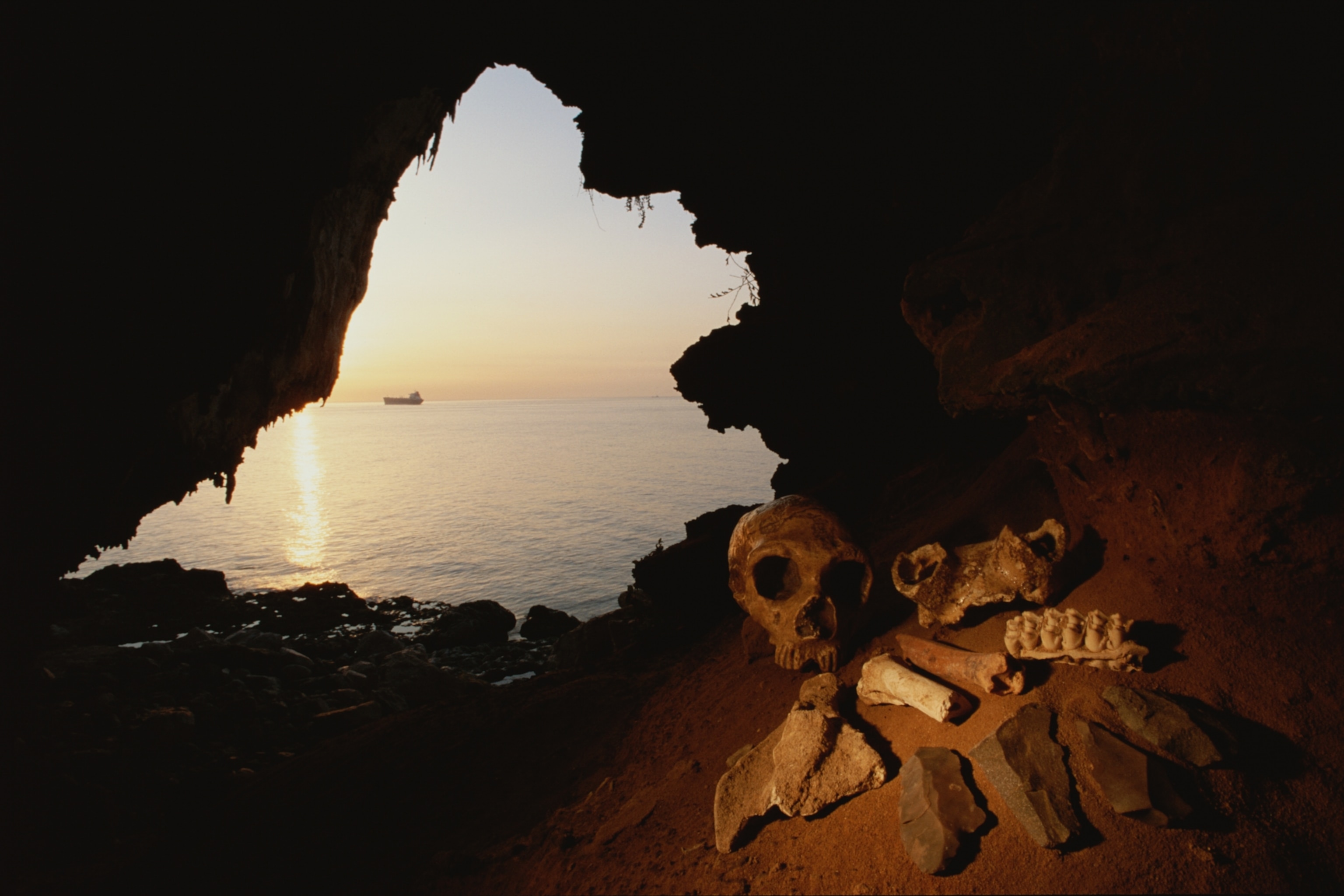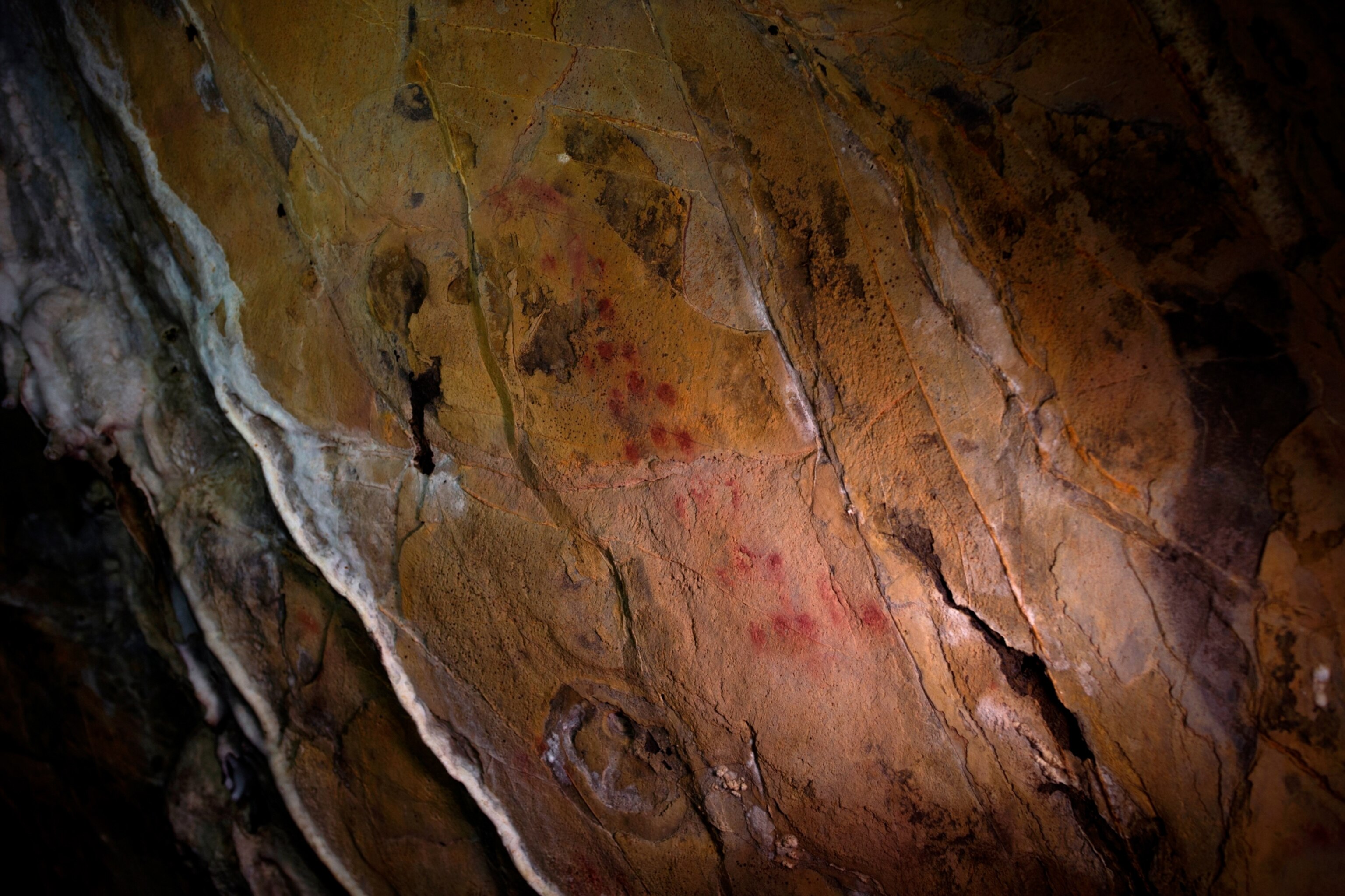What were Neanderthals really like—and why did they go extinct?
These ancient hominids, who disappeared 40,000 years ago, were once thought to be brutish. But recent discoveries have hinted they were more like us than we thought.

When limestone quarry workers in Germany’s Neander Valley discovered fossilized bones in 1856, they thought they’d uncovered the remains of a bear. In fact, they’d stumbled upon something that would change history: evidence of an extinct species of ancient human predecessors who walked the Earth between at least 400,000 and 40,000 years ago.
Researchers soon realized that they had already encountered these human relatives in earlier fossils that had been found, and misidentified, throughout the early 19th century. The discovery galvanized scientists eager to explore new theories of evolution, sparking a worldwide fossil hunt and tantalizing the public with the possibility of a mysterious sister species that once dominated Europe.
Now known as Neanderthals—so named by geologist William King—Homo neanderthalensis are humans’ closest known relatives. Here’s what to know about our human ancestors, including how they lived and why they died out.

What is a Neanderthal?
At first glance, fossilized Neanderthal bones seem human-like. But a closer look reveals the characteristics that differentiate our ancient ancestors from modern Homo sapiens.
Neanderthals looked similar to humans but had more prominent brows, protruding faces, and rib cages that were shorter, deeper, and wider. In addition, their eye sockets were much larger, though it is unclear if their vision differed from ours. Researchers believe that Neanderthal brains were roughly the same size as ours, although they were more elongated. Though debates on the size and structures of Neanderthal brains still rage today, researchers agree that the average male Neanderthal was about 5 foot 4 inches tall, while females stood at about 5 feet.
(You may have more Neanderthal DNA than you think.)
These hominids once lived throughout Eurasia. Researchers believe that due to the species’ adaptation to the region’s cold climates, Neanderthals had compact, massive musculature and would have required up to 4,480 calories a day to survive.
Megafauna like mammoths, elephants, and woolly rhinoceros made hunting an important facet of Neanderthal life. Living and traveling in small groups, they used tools like spears to satiate their meat-heavy diet. They also ate plants—which MIT geobiologist Ainara Sistiaga has said is evidence that Neanderthals “probably ate what was available in different situations, seasons and climates.”
Sometimes, this included eating their own: In 2016, scientists studying Neanderthal remains from a cave in what is now Belgium found “unambiguous evidence of Neanderthal cannibalism in Northern Europe.”
Were Neanderthals intelligent?
Researchers initially assumed Neanderthals were brutish, hairy thugs capable only of crude thought and bloody hunting. But some scientists have changed their tune as evidence has accumulated of some surprisingly human-like characteristics among these human ancestors.
Neanderthals used tools in domestic and hunting contexts, flaking rocks to create weapons, scrapers, and axes. Woodworking was also common—they cut and whittled sticks they used to dig or form spears.


Despite their assumed ability to withstand the cold, Neanderthals are also thought to have processed animal hides and crafted clothing that could cover up to 80 percent of their bodies. Like humans, they are thought to have covered their feet and other sensitive body parts, but since the clothing has long since disintegrated, researchers can only infer how Neanderthals may have dressed.
Another breakthrough was the discovery that Neanderthals may have been capable of symbolic thought. A few archaeological sites have yielded decorated eagle talons and objects thought to have been used in burial rituals—evidence, some say, of advanced thought and tradition. Then, in 2018, researchers announced they’d discovered evidence of cave paintings from 65,000 years ago—the oldest artworks of their kind. But the abstract nature of this art continues to fuel debates among scientists about how complex their mental capacities truly were.
When and why did Neanderthals go extinct?
Whatever their cognitive abilities, Neanderthals were ultimately doomed. However, their extinction is just as contentious as other facets of their lives, and scientists still debate what caused them to disappear around 40,000 years ago.
Researchers know that in at least some cases, Neanderthals coexisted and even mated with Homo sapiens, which emerged in Africa about 300,000 years ago. But Homo sapiens eventually won out genetically, and the vast majority of modern humans' genes come from our African ancestors. Some surmise that competition from humans for food and shelter, or evolution that selected for more successful human traits, contributed to the Neanderthals’ extinction. Others think that because Neanderthals lived in such small groups, they simply became outnumbered by humans.
Another hypothesis involves climate change: Scientists have documented a thousand-year-long cold snap in central Europe that coincided with the Neanderthals’ extinction about 40,000 years ago and that could have depopulated the species. Cooling is thought to have been less severe in areas populated by Homo sapiens, and those who embrace this theory believe that once Neanderthal populations declined, humans moved in and eventually became the dominant species worldwide.
Still another theory involves weapons: Perhaps early humans had better weapons and simply outbattled the Neanderthals.

Modern humans and Neanderthal DNA
Despite their species’ demise, fascinating remnants of Neanderthals can be found in the genetic material of some modern humans. Up to 4 percent of the DNA of humans living outside of Africa, the cradle of Homo sapiens, can be traced back to Neanderthals. That overlap shows that Neanderthals did interbreed with humans.
(How do Neanderthal genes affect your health?)
“Ironically,” write prehistory experts Peter C. Kjærgaard, Mark Maslin, and Trine Kellberg Nielsen, “with a current world population of about 8 billion people, this means that there has never been more Neanderthal DNA on Earth.”
Given how long it’s been since Neanderthals roamed Eurasia, it’s impossible to truly reconstruct how they lived and died. But the mystery of these human ancestors—and tantalizing hints that they were much like us—continues to drive research, and controversy, to this day.
You May Also Like
Go Further
Animals
- Octopuses have a lot of secrets. Can you guess 8 of them?
- Animals
- Feature
Octopuses have a lot of secrets. Can you guess 8 of them? - This biologist and her rescue dog help protect bears in the AndesThis biologist and her rescue dog help protect bears in the Andes
- An octopus invited this writer into her tank—and her secret worldAn octopus invited this writer into her tank—and her secret world
- Peace-loving bonobos are more aggressive than we thoughtPeace-loving bonobos are more aggressive than we thought
Environment
- Listen to 30 years of climate change transformed into haunting musicListen to 30 years of climate change transformed into haunting music
- This ancient society tried to stop El Niño—with child sacrificeThis ancient society tried to stop El Niño—with child sacrifice
- U.S. plans to clean its drinking water. What does that mean?U.S. plans to clean its drinking water. What does that mean?
- Food systems: supporting the triangle of food security, Video Story
- Paid Content
Food systems: supporting the triangle of food security - Will we ever solve the mystery of the Mima mounds?Will we ever solve the mystery of the Mima mounds?
History & Culture
- Strange clues in a Maya temple reveal a fiery political dramaStrange clues in a Maya temple reveal a fiery political drama
- How technology is revealing secrets in these ancient scrollsHow technology is revealing secrets in these ancient scrolls
- Pilgrimages aren’t just spiritual anymore. They’re a workout.Pilgrimages aren’t just spiritual anymore. They’re a workout.
- This ancient society tried to stop El Niño—with child sacrificeThis ancient society tried to stop El Niño—with child sacrifice
- This ancient cure was just revived in a lab. Does it work?This ancient cure was just revived in a lab. Does it work?
Science
- The unexpected health benefits of Ozempic and MounjaroThe unexpected health benefits of Ozempic and Mounjaro
- Do you have an inner monologue? Here’s what it reveals about you.Do you have an inner monologue? Here’s what it reveals about you.
- Jupiter’s volcanic moon Io has been erupting for billions of yearsJupiter’s volcanic moon Io has been erupting for billions of years
- This 80-foot-long sea monster was the killer whale of its timeThis 80-foot-long sea monster was the killer whale of its time
Travel
- Spend a night at the museum at these 7 spots around the worldSpend a night at the museum at these 7 spots around the world
- How nanobreweries are shaking up Portland's beer sceneHow nanobreweries are shaking up Portland's beer scene
- How to plan an epic summer trip to a national parkHow to plan an epic summer trip to a national park
- This town is the Alps' first European Capital of CultureThis town is the Alps' first European Capital of Culture







